What is a Blockchain Explorer? 2023 Guide

crypto basics
Blockchains are described as “dangerous” or “criminal” by some people, and it’s probably a coincidence that they mostly belong to a certain age or economic bracket. These are claims you can verify using a tool called a “blockchain explorer.”
A sad truth of the current day and age is that transparency is the enemy of the establishment. When it comes to the blockchain, you can’t hide—any transaction made on-chain, whether by an average Joe or a politician with skeletons in the closet, is reduced to mere data on the blockchain.
All of this data, including the amounts sent by the participants, is made completely public, and you can view it all with a blockchain explorer. Intrigued? Let’s dive in.
What is a Blockchain?
A blockchain is a distributed ledger or a network of multiple (up to hundreds of thousands of) independent computers that serve to uphold an immutable record of transactions.
Put simply, you can compare a blockchain to a historical, chronologically organized list of transactions made on the network. If you send some coins to someone else, that transaction is grouped with many others like it that happen within the same period of time. The data that makes up this collection of transactions is then forged into a block.
The block also contains a cryptographic hash of the previous block’s contents. This makes blockchains immutable since going back and changing a transaction would make the block hash change and break the chain.
This immutability isn’t the only thing that sets blockchains apart. They also feature different consensus algorithms that bring all network nodes into agreement about the validity of the transactions that took place on the network. This is why you hear so much about proof of stake and proof of work—both help to ensure blockchain consensus.
Blockchain consensus, via staking or mining, is incentivized. This helps to bring lots of stakers or miners to the network, making it healthier via decentralization and increasing its defense against being taken over.
One miner or validator produces a block, and the others check their work, validating the block. If it’s validated successfully, the block producer receives network coins.
What is a Blockchain Explorer?
Having established that a blockchain simply provides a collection of historical data, we can move on to exactly what a blockchain explorer is!
Data, especially in its raw form, tends to be useless unless you really know what you’re looking for. Someone who isn’t a programmer could look at pages of code and not be able to understand very much, but once you put that code through a compiler, the finished product emerges.
Likewise, the humble blockchain explorer is to blockchain data what a web browser is to the internet.A blockchain explorer allows you to view the transactions on a blockchain, search through them, sort them, and parse them far more comfortably.
Most blockchains will take the form of a webpage, although it’s possible to download block explorers in app form.
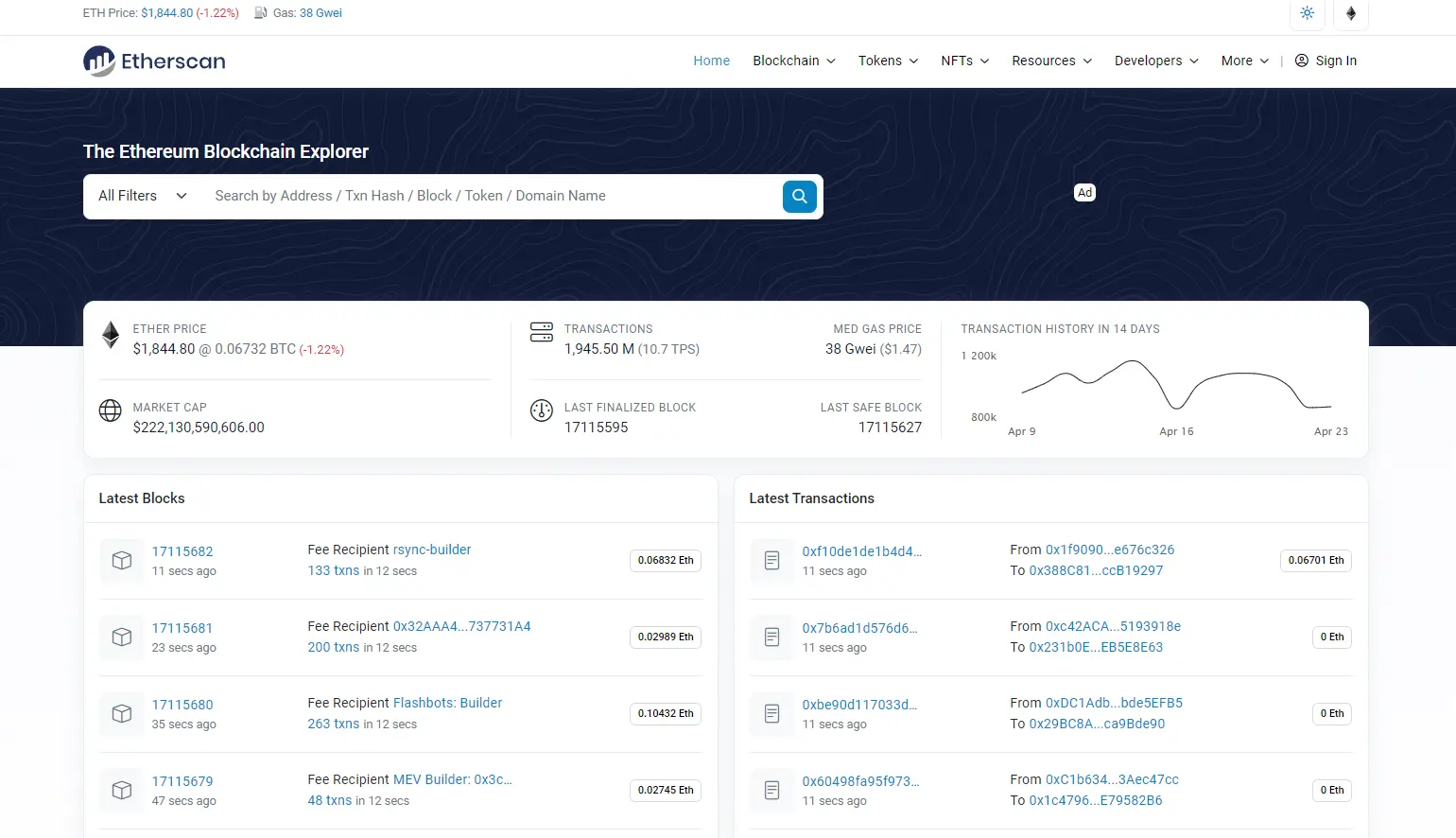
This is Etherscan, the official blockchain explorer for the Ethereum network. As you can see, there are a lot of blockchain statistics on offer, but the main function is search. If you conduct a transaction on the Ethereum blockchain, you can drop the transaction hash into that search field and check on its status at any time.
The peace of mind this can provide is more valuable than you may think, given that many major blockchains take a while to confirm transactions. Imagine moving thousands of dollars worth of crypto and not getting an immediate success notification! Well, a block explorer can assure you that it’s been recorded on the chain and is in progress.
That said, blockchain explorers can provide plenty of additional utility. They’re a great research tool, given the open and public nature of major chains like Ethereum and Bitcoin. Want to check out all of Satoshi’s wallets? Go for it. Did you see a multi-million dollar transaction and want to trace the coins back to the source? All it takes is a few clicks.
Applications of Block Explorers
A blockchain explorer is a dynamic tool for familiarizing yourself with the blockchain, but it doesn’t stop there. Here are some of the many things you can do with a blockchain explorer:
- Monitor gas fees. Fees are a killer on several blockchains, including Ethereum, and a blockchain explorer lets you monitor gas price movements.
- View blockchain statistics. It could be interesting to explore blockchain statistics and compare them to current events. Large transactions are particularly interesting to follow, but you can also use a blockchain explorer as a research tool.
- Audit crypto. You can audit wallet activity using a blockchain explorer. Can’t remember what transactions you made? Just search for your wallet address, and all will be revealed.
- Explore genesis. Going back to a blockchain’s genesis is always enlightening, and you can view all of Satoshi’s or Vitalik’s early activity using a blockchain explorer.
- Watch whales. The aforementioned pair could certainly be counted as whales, but this goes a step further. Interested in buying a coin but heard rumors of a wallet with an outsized amount that could dump coins and crash the market? Simply corroborate that using a block explorer.
- Track block producers. Knowing which miners or validators are producing blocks is important if you’re scoping out mining pools.
- Check transaction status. Perhaps the most useful application if you tend to get nervous about making blockchain transactions. This way, you can search for the transaction hash and keep track of its progress!
How do Blockchain Explorers Work?
Blockchain explorers function in tandem with a node interface to extract all of the blockchain’s data. This data is maintained in a searchable format, but the explorer still has much to do, using relational databases, SQL databases, and an API.
Relational databases simplify data management by storing related data—SQL allows a database to be searched easily, and an API lets you, the user, communicate with the system via software.
Once it has all of the data it needs, the blockchain explorer can arrange things into the searchable categories you see when you use one. It can order data by wallet addresses, transaction hashes or IDs, and even balances (thereby allowing you to do a little whale-watching).
Best Blockchain Explorers
There’s no such thing as the best blockchain explorer since many blockchains have dedicated and often official developer-managed explorers. That said, the following are some of the most popular blockchain explorers in use for the top blockchain networks out there:
#1. Etherscan (Ethereum)
Etherscan is a block explorer and an analytics platform for Ethereum that’s as official as it gets but also offers Explorer-as-a-Service and API plans. It’s the universal go-to for anything related to Ethereum and perhaps the most used block explorer across the entire industry.
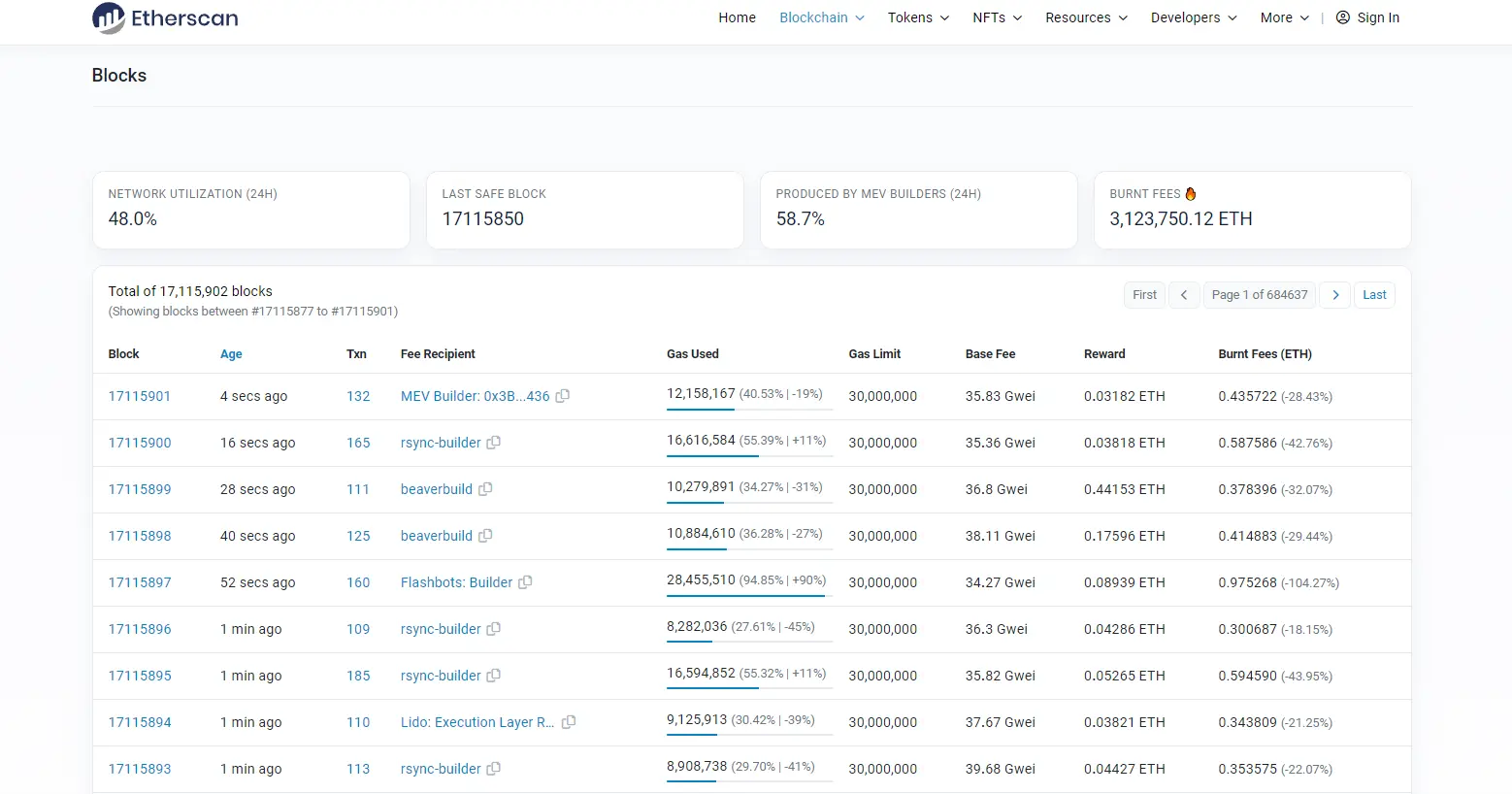
#2. Blockchain.com (Bitcoin)
While it also covers Ethereum, blockchain.com’s explorer is one of the sturdiest options for Bitcoin. It offers all of the information you’d ever need at a glance and keeps track of Bitcoin’s hash rate distribution with an extremely convenient colored pie chart. It even covers the BTC testnet!
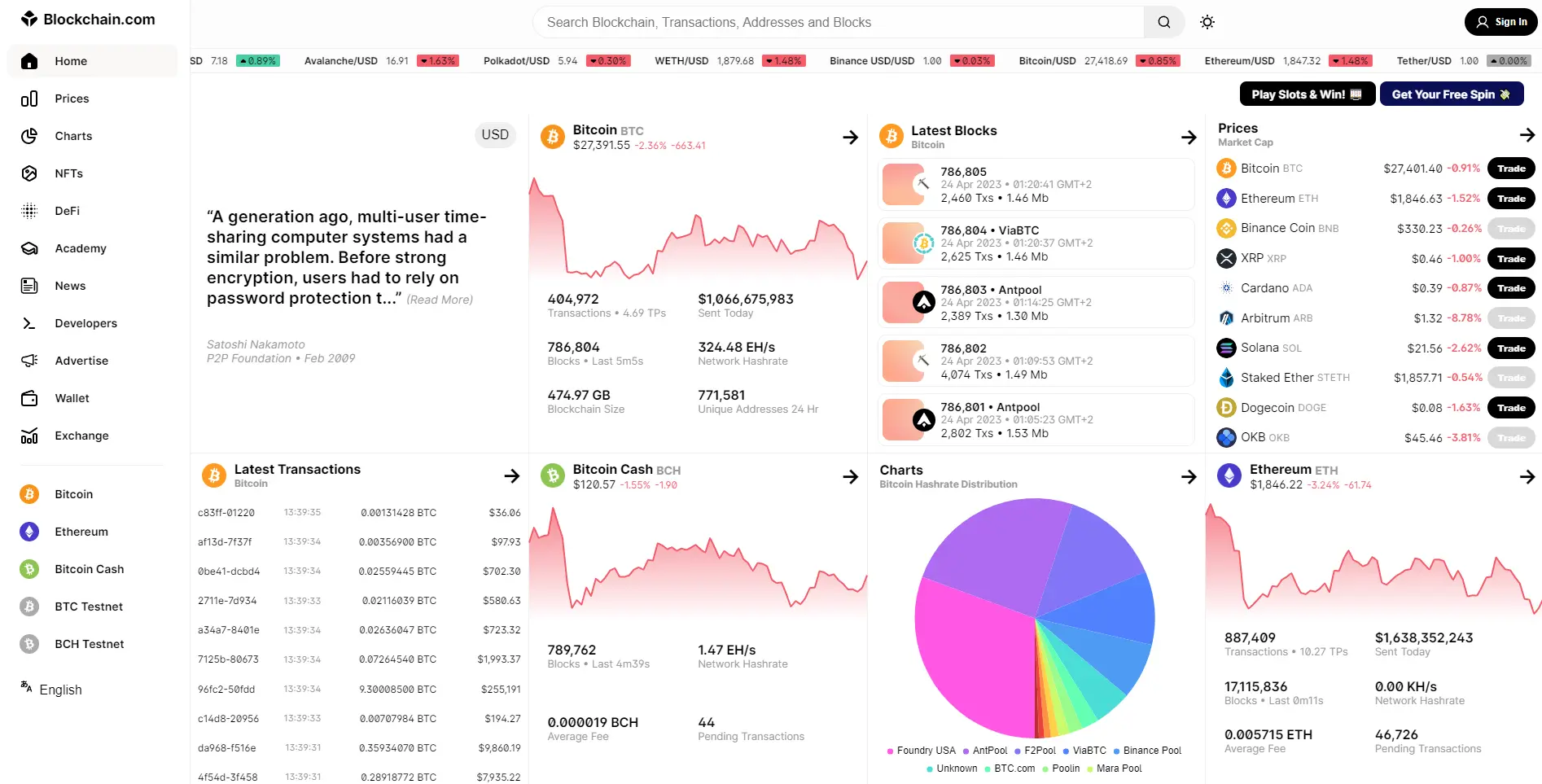
#3. BscScan (BNB Smart Chain)
BscScan is the official explorer of the BNB Smart Chain and Binance’s BNB cryptocurrency. It’s also an extremely popular blockchain explorer, given the wide use that the BNB Smart Chain enjoys with its low-fee smart contract platform.
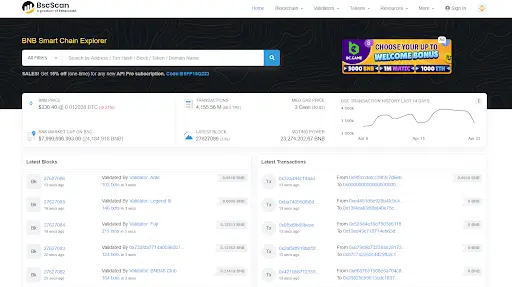
#4. Cardano Blockchain Explorer (Cardano)
The Cardano Blockchain Explorer is supported by IOHK, the organization behind Cardano itself, and provides a clear view of Cardano’s latest epochs and blocks. It’s not quite as easy to navigate as many others from the get-go, thanks to its cleaner interface, but you can get to most, if not all, of the information you need in just a few clicks.
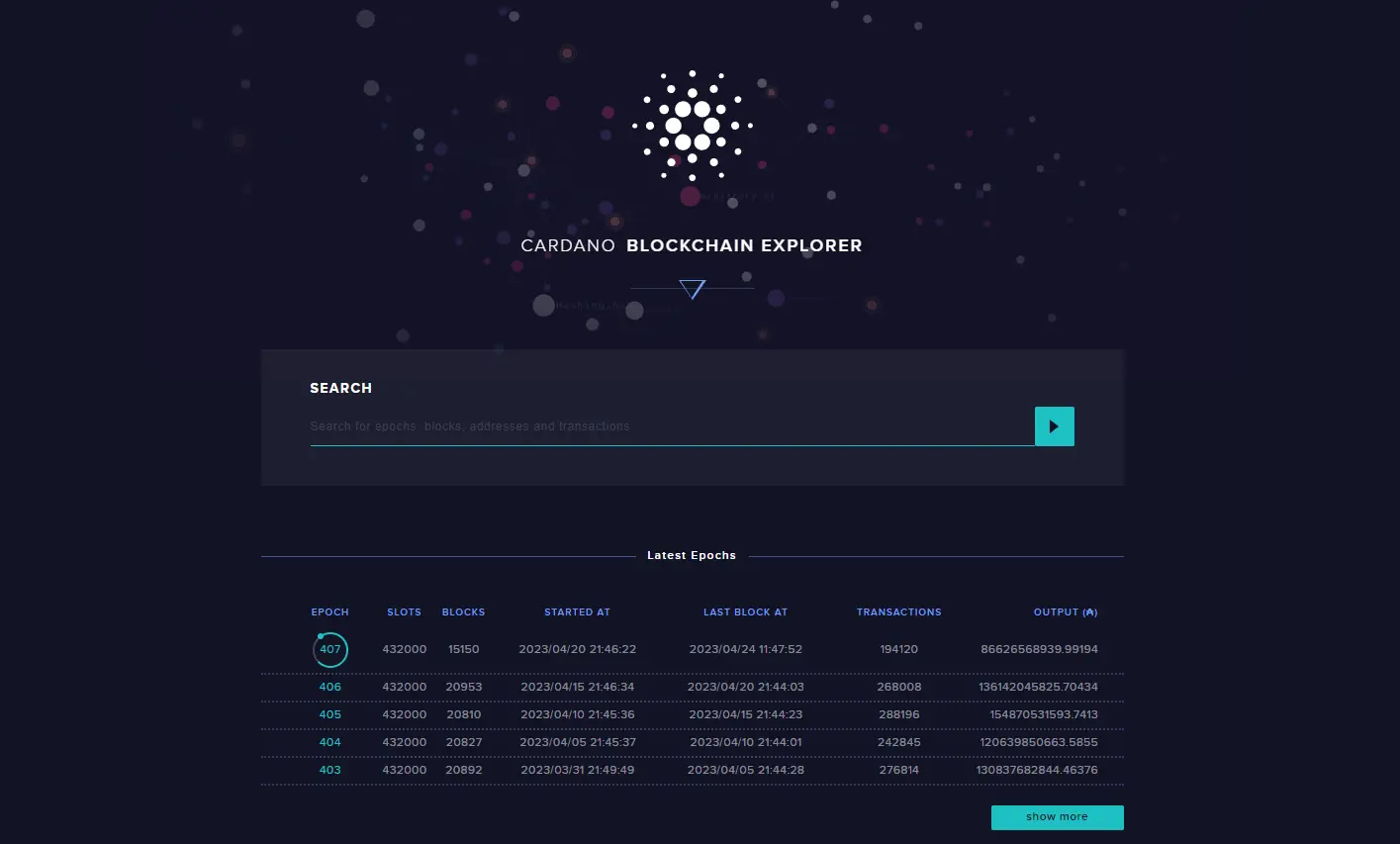
#5. Subscan (Polkadot)
Subscan is part of the Polkadot Alliance and puts all of the information you need about the Polkadot Relay Chain right at your fingertips. It’s fast, responsive, and even provides an overview of Parachain connection status and DOT staking statistics.
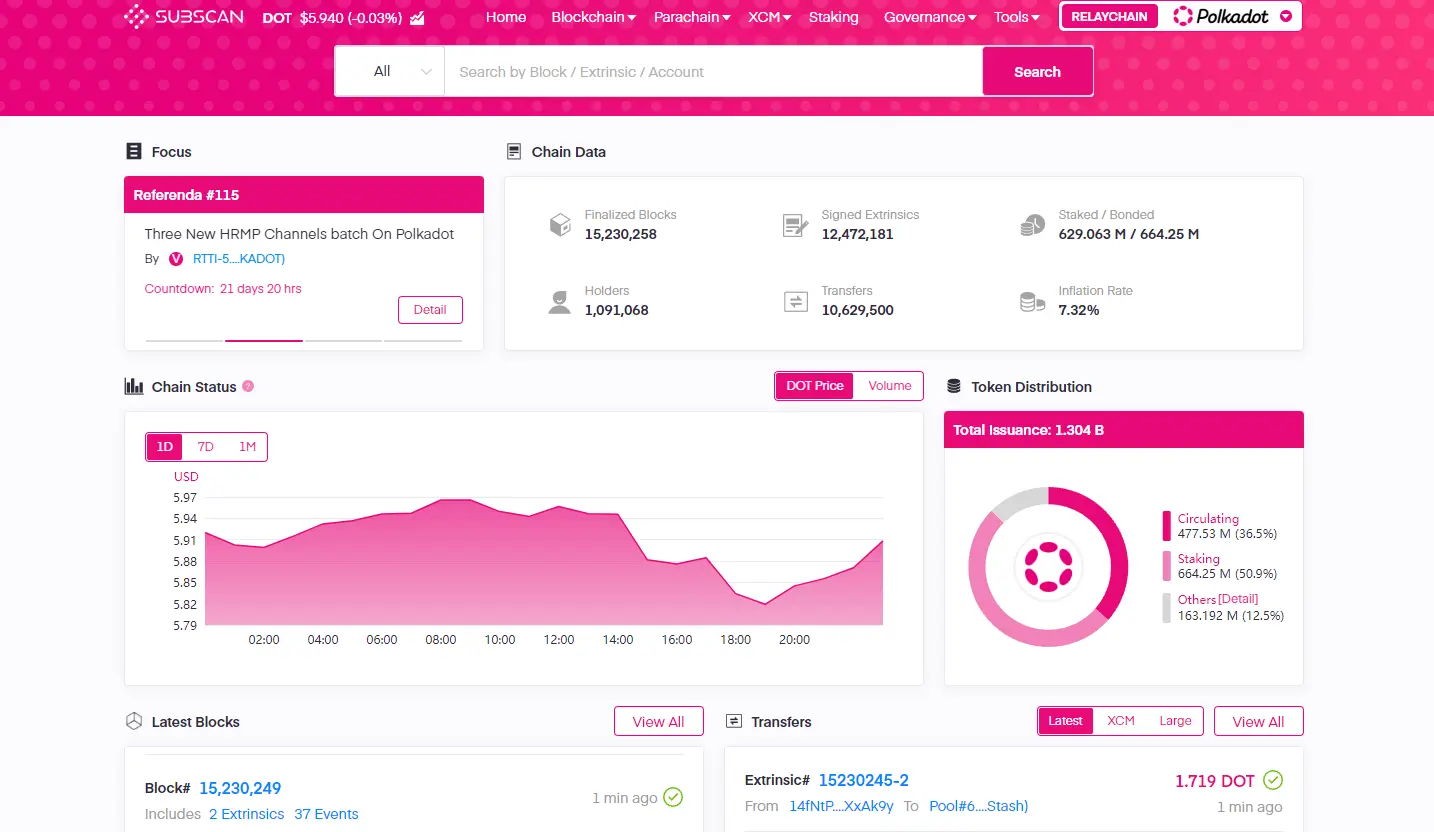
#6. Polygonscan (Polygon)
If you’re comfortable with Etherscan and BscScan, Polygonscan is another member of the family. It’s proudly built by the same team behind Etherscan and has all of the same quality-of-life features that make Etherscan so easy to use.
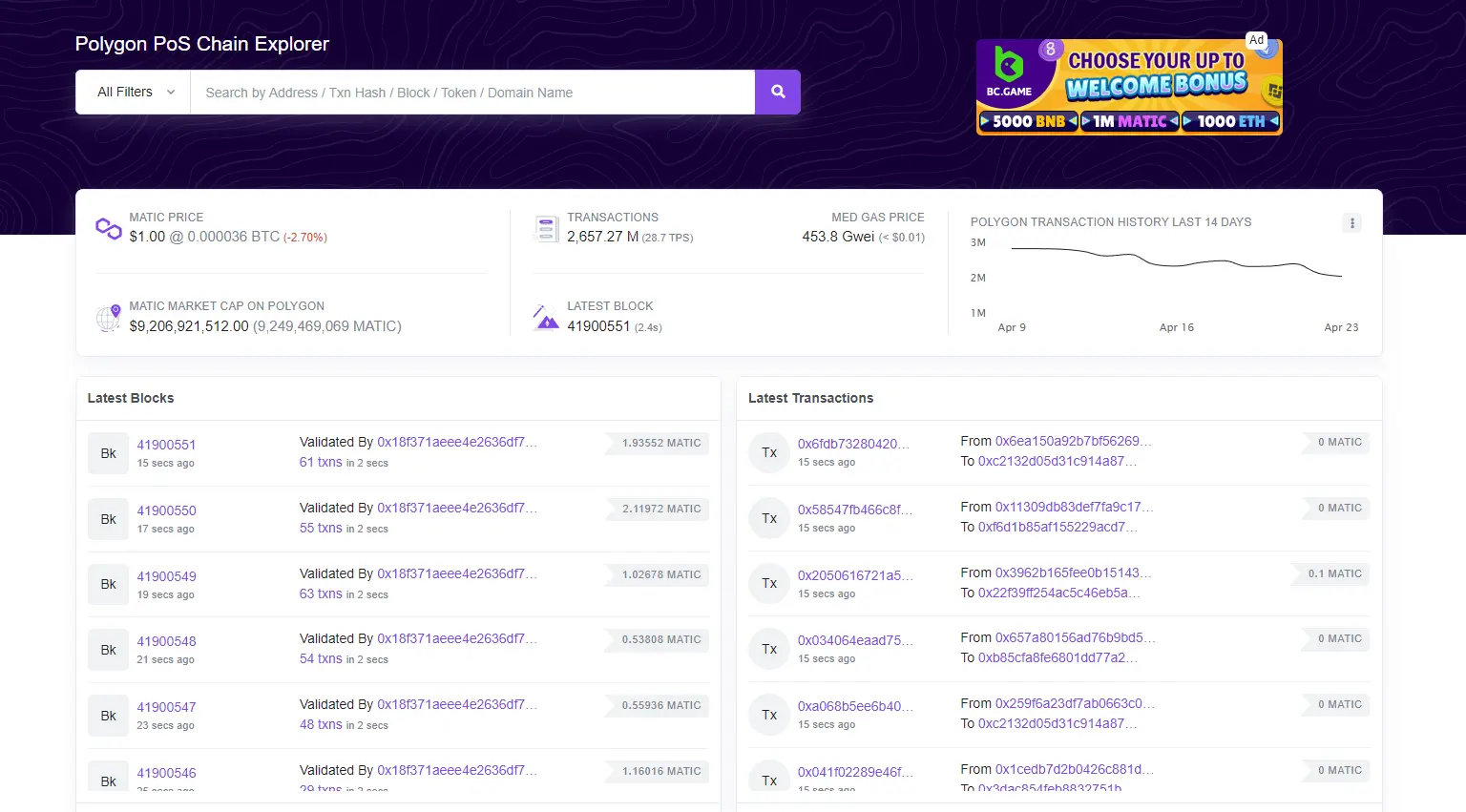
#7. Solscan.io (Solana)
Solscan is one of the smoothest and most responsive block explorers for Solana. It also offers lots of key information at a glance, such as how much SOL is staked. Solscan also knows what Solana is all about, with detailed NFT and DeFi dashboards taking prominence.

How to Use a Blockchain Explorer
As the above list shows, blockchain explorers can come in various forms. Some look alike, thanks to being built by the same team, but they can also vary dramatically.
That being said, the primary feature all blockchain explorers have is a search field. You’ll notice this on almost any block explorer that you visit, and you might also spot that you can search for various things. Almost anything can go into the search field, whether it’s a wallet address, transaction hash, block number, or domain name.
To get started, enter some alphanumerics into this field. Your first use of a block explorer may well be to check on the progress of a transaction you made, so you can enter either the transaction hash itself or your wallet address.
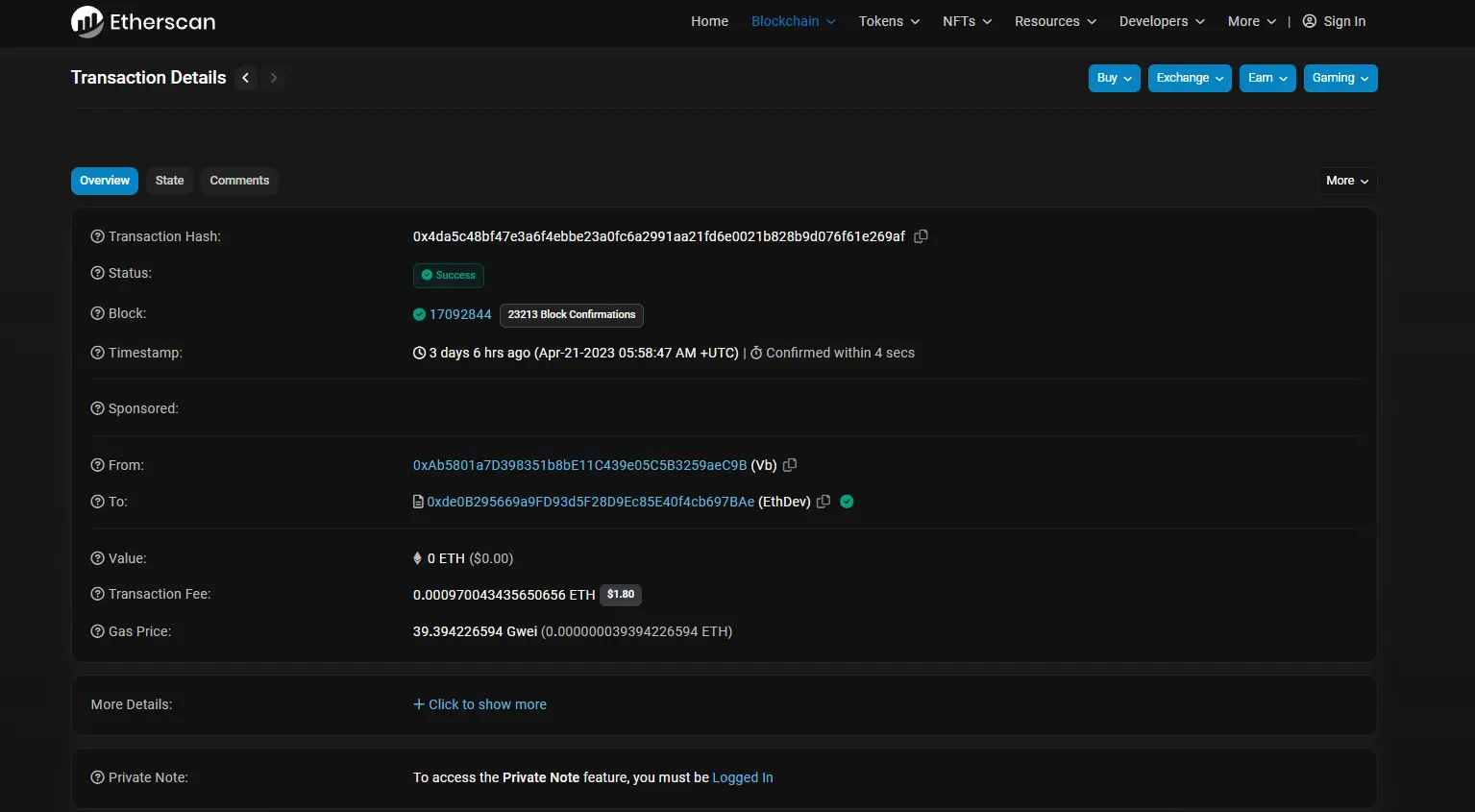
You’ll also see the “from” and “to” fields. If it was a transaction you initiated, your wallet should be in “from.” “To” will be the wallet to which you sent funds. In this case, we’re looking at a transaction Vitalik Buterin sent to the EthDev wallet.
Clicking on Vitalik’s wallet address will give you an overview of his ETH balance, its current dollar value, and the entire list of transactions that the wallet has ever been involved in.

This is what people mean when they say that blockchains are public. With this level of detail available to anyone who uses a blockchain explorer, you can see that open networks like Bitcoin and Ethereum aren’t at all suitable for illicit transactions.
Future of Block Explorers
Blockchain explorers are one of the greatest features of blockchain, though they seem like one of the simplest.After all, you can’t have anywhere near as much access to data right at your fingertips when it comes to the traditional financial system.
Access to the supposedly advanced Bloomberg Terminal to have level 2 data on the stock market costs tens of thousands of dollars, and even then, there’s no way of ever knowing the true details of a stock’s true ownership and distribution. And you’d never even dream of being able to see bank transfers going through in the same way as you can view blockchain transactions.
As long as public, open blockchains continue to exist, block explorers will remain among the most valuable tools for users, professionals, and students of the technology alike.
Key Takeaways
A blockchain explorer is a webpage or application that allows you to search and sort through the data available on a blockchain. While the plumbing that makes a block explorer work isn’t revolutionary, the fact that it provides so much data and transparency is.
Using a blockchain explorer, you can view the details of any transaction that goes through on the blockchain. If the blockchain doesn’t include privacy features, those details include who sent the transaction, who received it, and even what the amount was.
This sort of openness is yet another weapon in blockchain’s arsenal when combating the opaque recesses of traditional finance. Thanks to blockchain explorers, everything comes to light.
Blockchain Explorer FAQs
Does Ethereum have a blockchain explorer?
Ethereum has plenty of blockchain explorers, but the most popular one is called Etherscan. Using it, you can view the details of all transactions that go through on the blockchain and check the status of any transaction you send. You can even audit all of the Ethereum transactions your wallet address has ever made.
Are blockchain explorers safe?
Yes, as long as you remember that a blockchain explorer never needs to connect to or interact with your wallet. You can copy and paste the text into the block explorer, so any site or app that wants more input from you should raise a red flag.
How do you use a blockchain explorer?
Simply paste data such as your wallet address or transaction ID into the block explorer’s search field. On some explorers, you can even navigate by entering a domain or simply a name.